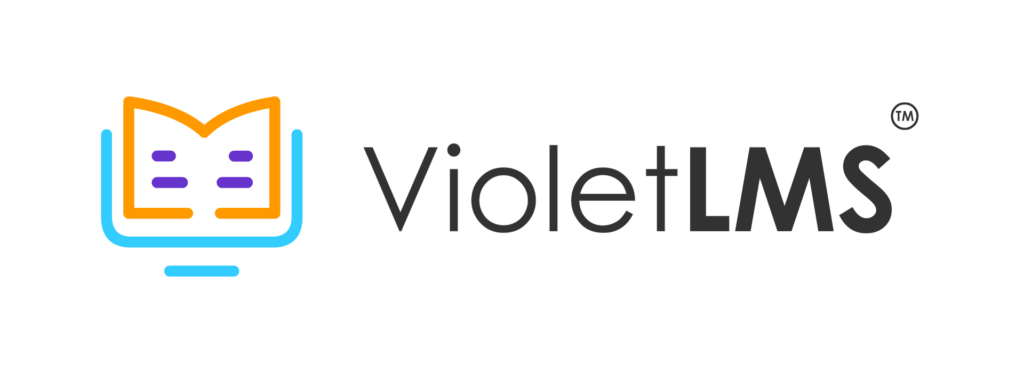Imagine a digital hub where the process of developing, organizing, and delivering courses is simple. In this quickly evolving world, a learning management system, or LMS, is more than just a string of characters; it’s the key to unlocking a more intelligent, effective method of teaching and learning. Start your exploration of modern learning by asking yourself a basic question: What is an LMS? Come along as we explore the features, discover how it operates, and uncover the transformative potential of LMS. Let’s go ahead and evaluate the choices! An LMS can save an organization time and money. Instead of making learners take time out of their day to travel and sit through classes or training at another location, LMS let them complete the coursework at a time and in a place that’s best for them.
What is LMS?
A learning management system helps companies manage training content for compliance, career development, upskilling and reskilling, among other areas, and can benefit organizations in various ways. An LMS is an option for organizations of any size and is available via a web browser or mobile application. A Learning Management System, or LMS, is a digitalized learning platform that enables the creation, management, and delivery of eLearning courses in an efficient manner while simultaneously managing and organizing data. LMS allows:
- Users to have access to learning resources
- Administrators to monitor user activity and course details
- To streamline training processes, tasks such as grading and reporting are automated
Used for e-learning practice, an LMS consists of two elements;
- Admin interface: Here the training manager performs core, back-office tasks to organize their company learning programs. Alongside that, the admins can add learners, analyze reports, and automate notifications too.
- User Interface: Here, learners can see when the courses are enrolled or assigned. This interface runs inside your browser like Gmail or Facebook.
Generally, LMS aids instructors in content creation and deliverance, monitors student participation, and assesses student performance. The best part is it provides students with interactive elements such as video conferencing, threaded discussions, and discussion forums.
When it comes to the application of LMS, they aren’t restricted to one sector, instead, they can be used in multiple sectors such as government agencies, businesses, and educational systems. LMS software proves to be a time and money saver for educational institutions. An adequate system enables instructors and administrators to manage elements such as user registration and access, content, calendars, communication, quizzes, certifications, and notifications in an efficient manner.
How Does an LMS Work?
An LMS allows you to create, upload, store, and assign online courses for learners to access and take on desktops, laptops, tablets, or mobile devices via browser or mobile app. It provides the option of online training as well as offline learning.
You can create an entire corporate knowledge base from existing courses, eBooks, and videos, or set up customized learning paths for specific positions or employee groups, such as new hires or franchisees. For an LMS to work smoothly, the following steps can be followed:
- Creating an eLearning course:
To deliver LMS training and eLearning content, you must first add it to your LMS. You can accomplish this by either writing your lesson content within the LMS or creating your course material from scratch, or by incorporating existing material like a Word document, a PowerPoint presentation, Wikipedia articles, and so on. Additionally, LMS software also has one that enables the incorporation of YouTube videos or Wikipedia articles. - Organize courses:
Once the course has been created, the next step is to organize the courses. Sometimes incorporating them can be as smooth as offering a single course and sometimes it can be as rough as deploying more than a single course for departments and student groups operating across several branches. - Deliver courses:
After the successful creation and organization of the course, now you are ready to deliver that course. Again, how you go about it will be decided by your company’s needs and structure. For example, your courses could be designed for a specific audience, such as employee training within your company. Alternatively, they may be made available to a broader audience, either for free, as in the case of an NGO teaching specific in developing countries or as paid courses, as in the case of a virtual school that delivers web programming courses.
Who Uses an LMS?
Anyone delivering eLearning courses irrespective of being from an educational institution or other sectors, can leverage an LMS for streamlined training processes. LMS advantages extend across diverse organizations, from global enterprises to startups, highlighting the versatility of LMS applications. Nonprofits, government agencies, and educational institutions also find value in LMSs, serving a broad spectrum of audiences. The benefits of LMS make it an indispensable tool for enhancing training experiences and overall organizational performance.
- Corporate trainers
To deliver compliance training and foster professional development, trainers of global enterprises largely depend on corporate LMS to onboard new employees. The corporates use LMS software to monitor learners’ progress and customize training content which helps learners to develop skills as per their specific job role and needs. - Small to medium enterprises
For these enterprises, LMS is used as it helps in reducing the time spent by people on training. Training is sometimes felt as laborious and time-consuming to do manually. So, here the LMS advantages them by freeing up their time for other tasks but with the right skills and knowledge from the completed training. - Large enterprises
Trainings delivered by large enterprises covers employee training to enable new hires onboarding or customer training to multiply product knowledge. These enterprises are large scale examples where different individuals need diverse training. - Specialized product training
The companies which have products also use LMS to train clientele or partners on the product. This covers medical device providers, software companies and multiple product-based companies. The benefits of this type of training are a reduction in customer churn and more engaged valuable customer. - Government agency administrators
To deliver compliance training, Government agencies also use LMS software. To keep up with current politics and regulations, it is essential for them to train every member. Additionally, LMS platforms make it easier to handle the administrative side of overseeing a big team. They help track and report on training progress smoothly. - Nonprofit program managers
In case of Nonprofit organizations, staff and volunteers are provided training and educational resources through LMS platform. Program managers keep tabs on volunteers’ advancement in different projects, ensuring they acquire the necessary skills and knowledge to actively contribute to the organization’s mission.
What Are the Benefits of an LMS?
LMS training proves to be a cost-effective and time-saving solution for organizations. By allowing learners to complete coursework at their convenience, it eliminates the need for them to travel and attend classes at different locations. Furthermore, LMSs remove the necessity for instructors, dedicated training days, physical training materials, travel reimbursements, and expenses associated with securing a specific location for training.
Benefits of LMS include the following:
- Monitoring users learning progress and performance.
- Rise in e-learning accessibility without regard to geography.
- Online courses, training, and learning experiences that are tailored to the individual.
- The ability to effortlessly and easily update e-learning modules and activities.
- Online training and learning content must be distributed consistently and easily throughout an organization.
- Repetitive tasks, such as user enrollment and certification, are eliminated.
- Centralized learning allows an organization to store and manage all data in one location, allowing instructors and administrators to update and maintain learning materials more easily.
- Advanced encryption features protect data and content.
Types of LMSs
LMS software, like any other software, has various types. When you start with the selection of an LMS as per your organizational needs, you will be overwhelmed by the number of LMSs in existence. No doubt all platforms are designed for training, but some are exactly suitable as per your learning goal and industry. Let’s take an overview and see which LMS type is best for your business and training needs.
- Corporate vs. Academic LMSs
Corporate as well as academic LMS, both can provide access to learning material and aspects of training processes. But here are some differences that can distinguish one from the other: - Learning goals: Corporate training focuses on practical application and its main objective is ROI whereas Academic LMS focuses on producing good students who are well-versed in their subjects and eager to learn more.
- Course Timelines: Training durations are short in the case of corporates, so the training platform must be flexible and should be able to meet all the needs of the business. The terms used by educational institutions are semesters, trimesters, and quarters. They require scheduling elements like periods, exam times, and holidays.
- Content update: A corporate LMS should be able to seamlessly and rapidly upgrade courses to meet evolving customer needs. Nevertheless, since the majority of the content in educational LMS is derived from the humanities and sciences, they do not require frequent updates.
SaaS/Cloud LMS vs. Locally hosted LMS
You have two options: either choose a SaaS LMS platform and let your vendor handle server load, backups, and security, or store all the data on your company’s servers and manage the system yourself. If you want to emphasize developing educational content and don’t have any IT professionals, a SaaS platform is the ideal fit.
Because of worries about data security, some businesses avoid clear cloud-based lms. They worry that their data, which is kept on another location, could be affected. On the other hand, there are various approaches to data security. For example, assure that the LMS provider will back up your data and has strong encryption protocols.
Free vs. Commercial
It’s important to understand that not all open-source learning management systems (LMSs) are free in choosing a decision between a free, open-source system and a commercial platform. Your team needs to be tech-savvy to succeed because, even in cases where licensing fees aren’t required, you will probably have to establish a server and hosting architecture, customize features and branding, and upgrade your system regularly.
The best choice for users without any technological experience is commercial LMS software. It usually comes with tech support services, is much simpler to install and operate, and doesn’t cost extra.
LMS vs. LCMS (Learning Content Management System)
If you are thinking of building an in-house eLearning course, there are two options from which you can opt for LCMS – with course creation functionality, LMS and an authoring tool separately. Nevertheless, you may encounter two issues here:
- Integrated course editors typically possess significant functional constraints.
- Not every authoring tool and LMS work together flawlessly.
Use the authoring tool included in the LMS suite with Violet LMS to create stunning interactive courses and steer clear of compatibility issues. With this integration, you can easily create e-courses that look qualified, upload them to the platform, and take advantage of competent reporting features.
Conclusion
A Learning Management System (LMS) stands as a pivotal tool for organizations seeking to enhance training processes, irrespective of their size or sector. With the ability to streamline course creation, automate tasks, and monitor user progress, an LMS like Violet LMS emerges as a game-changer. Its user-friendly admin interface empowers training managers, while the intuitive user interface ensures a seamless learning experience. From cost savings to accessibility and tailored learning experiences, the advantages of LMS are undeniable. Whether you are a corporate trainer, part of a small or large enterprise, or involved in government or nonprofit initiatives, choosing LMS software can revolutionize your training approach, making it efficient, engaging, and impactful. Experience the transformative capabilities of Violet LMS and witness firsthand the evolution of your organization’s learning landscape.



